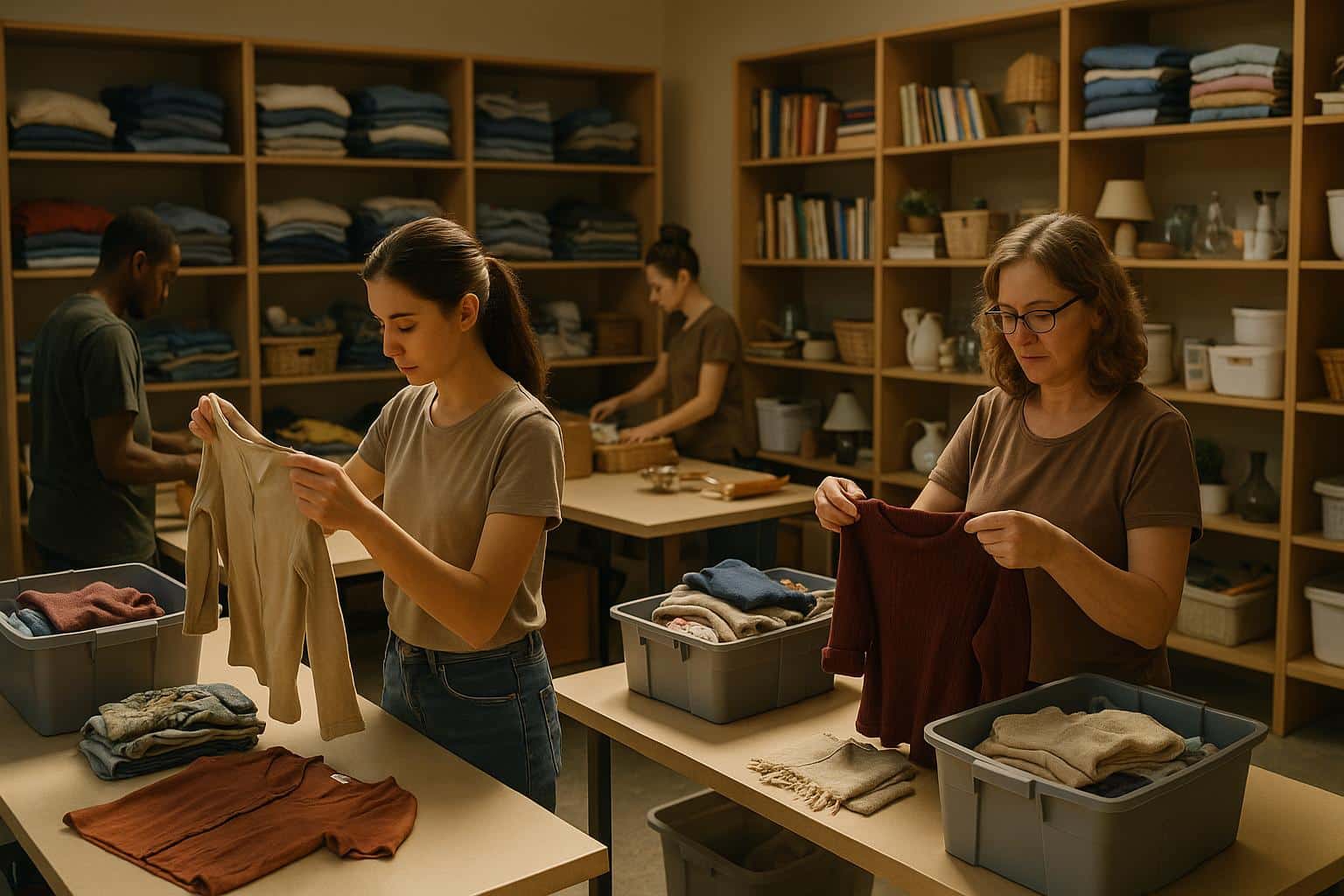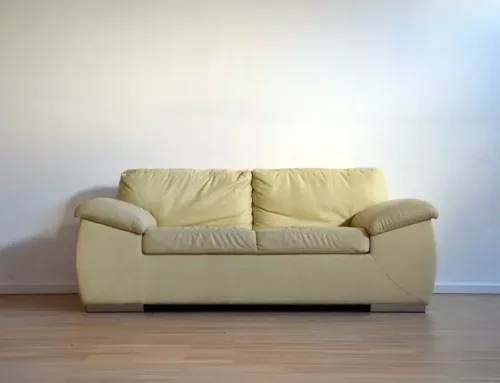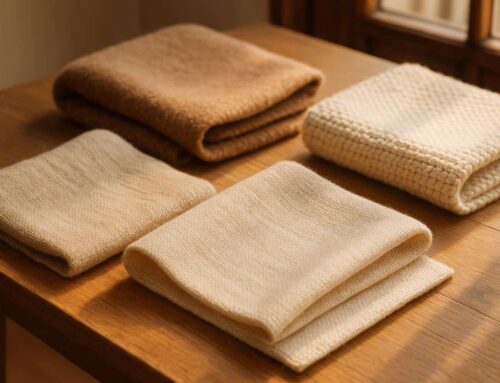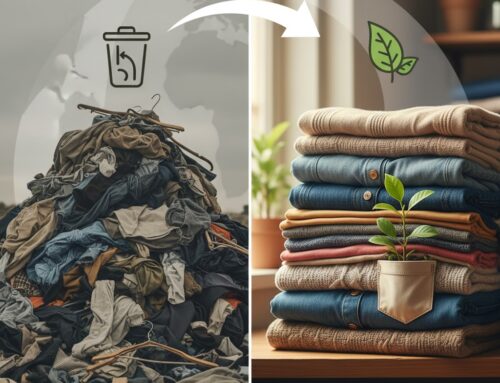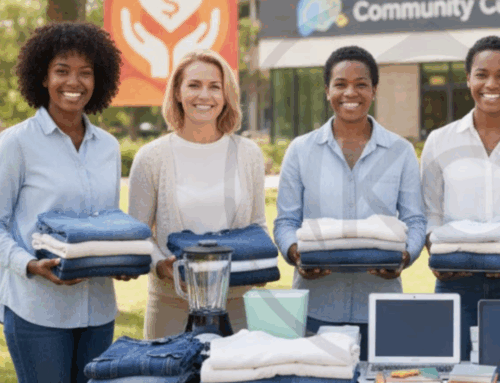When you donate items to a thrift store, they go through a detailed process to ensure they can be reused or sold. Here’s how it works:
- Initial Check: Staff quickly screen for damaged or unusable items to avoid processing waste.
- Sorting: Items are categorized (e.g., clothing, furniture, electronics) for better organization.
- Quality Review: Items are inspected for issues like stains, damage, or missing parts. Some are repaired or cleaned.
- Preparation for Sale: Merchandise is arranged by size, type, or theme, making it easier for customers to shop.
- Handling Unsellable Items: Items that can’t be sold are recycled, repurposed, or donated elsewhere to reduce waste.
The entire system ensures donations make a positive impact, whether through resale or recycling, while supporting community programs like those run by City Union Mission. By following donation guidelines – such as labeling and cleaning items – you can help thrift stores process your contributions more efficiently.
Donation Intake: Receiving and Checking Items
The donation intake process plays a crucial role in setting up a thrift store for success. When donors arrive with their contributions, staff members are there to ensure everything runs smoothly. How donations are received and assessed directly affects the store’s efficiency and its ability to serve the community effectively.
How Staff Handle Drop-Offs
At designated drop-off points, staff assist donors by unloading items, noting the types and quantities of donations, and briefly explaining how these contributions support City Union Mission’s programs. These quick conversations not only provide transparency but also build a sense of connection, encouraging donors to return. Documenting donations also helps the store anticipate busy periods, like spring cleaning or post-holiday surges, and ensures the process stays organized. This initial step lays the groundwork for a quick quality check.
First Quality Check and Guidelines Review
Once donations are unloaded, staff visually inspect each item to ensure it meets quality standards. Items with damage, stains, or other issues are filtered out early.
“Setting clear rules on what donors can and can’t give is an effective strategy to control the quantity and quality of your store’s donations. By putting some responsibility on your donors, you ensure your staff receives suitable, high-quality items, streamlining the sorting process.” – Kyle Payton, ThriftCart
These quality standards are applied across various categories:
- Clothing should be clean, free of stains, and in good condition.
- Electronics must power on and include any necessary components.
- Furniture should be sturdy and intact.
- Books and media need to be in readable or playable condition.
Staff also ensure donations align with current store guidelines. Sometimes, certain items are temporarily restricted to manage inventory levels effectively. This is especially important given that up to 84% of donated textiles end up in landfills due to poor quality or low demand. By maintaining strict intake standards, thrift stores like City Thrift reduce waste and ensure that donations genuinely benefit the community. Clear labeling by donors further streamlines this process.
Why Clear Labels and Preferred Items Help
Donations labeled clearly by donors can significantly speed up intake. For example, a box marked “Winter Coats – Clean” moves through sorting much faster than an unmarked bag of mixed items.
Following donation guidelines – such as washing clothing, testing electronics, and securely packaging fragile goods – ensures that items can quickly enter the sorting process. However, charities have reported a noticeable decline in the quality of donated garments over the past 15 to 20 years, making it harder for these items to be resold.
Seasonal factors also come into play. Temporary restrictions on certain items help manage inventory and ensure the store remains organized year-round. For instance, accepting heavy winter coats in the middle of summer can create storage challenges and delay their availability when they’re actually needed. Clear communication about these restrictions helps donors plan their contributions better, making the entire process smoother for everyone involved.
Sorting Process: Organizing Items by Category
Once items are received, they move into a sorting process that turns mixed donations into neatly organized inventory. This step plays a big role in determining how fast items hit the sales floor and how effectively the store meets the needs of its community.
Setting Up Sorting Areas
Sorting areas are carefully designed with clear labels and essential tools to make categorization smooth and efficient. These spaces are typically located near the receiving area where donations first arrive. The setup includes bins for various categories like clothing, household items, furniture, electronics, toys, and books, as well as specialized sections for items like dishes, small kitchen appliances, purses, shoes, and children’s clothing. This system keeps everything organized and ensures no item is overlooked.
A clutter-free sorting area is key to maintaining productivity. A tidy space helps staff stay focused and work at the pace needed to handle the steady flow of donations.
Cleaning and Preparing Items for Sale
After sorting, items are cleaned and prepped to meet quality standards. Each item is evaluated based on its condition, using categories such as “excellent“, “good“, “fair“, or “as-is“.
Minor touch-ups are done to improve the appeal of items. For example, clothing is lint-rolled, stain-treated, and steamed to remove wrinkles. Furniture and electronics are cleaned, and small fixes – like tightening screws on furniture – are handled during this stage.
Cleaning isn’t just about looks. Presentable items sell faster and often fetch better prices, which helps generate more funds for programs like those supported by City Union Mission. Staff often focus on one category at a time, but may switch between individual item processing and batch sorting based on the volume of donations.
Handling High-Value and Special Items
When sorters come across antiques, designer goods, or other valuable items, experienced staff step in to assess and handle these donations with care. Even seemingly ordinary items can sometimes command higher prices, making this step critical for maximizing the value of donations.
These high-value items are typically stored securely until they’re ready for premium pricing, special displays, or exclusive sales events. Some stores even have dedicated areas to protect these items and ensure they receive the attention they deserve.
For unsellable items, thrift stores have systems in place to minimize waste. Materials like glass, electronics, and textiles are sent to recycling programs, while some items are donated to shelters or international aid organizations. This approach ensures that even donations that don’t make it to the sales floor can still serve a purpose.
Quality Control and Inventory Tracking
Once items are cleaned, they go through a detailed quality control process to ensure they meet the necessary standards for resale and maximize their potential donation value. After passing this stage, items are carefully tracked and managed through an organized inventory system.
Setting Quality Standards
Quality standards act as the final filter before items are made available to customers. Staff carefully assess each item for functionality, appearance, and safety. For clothing, this means looking for issues like permanent stains, large holes (bigger than a quarter), missing buttons, or broken zippers that can’t be easily repaired. Electronics are checked to ensure they power on and perform their basic functions. Furniture is inspected for structural integrity – steady legs, intact drawers, and overall usability are non-negotiable.
Items that don’t initially meet these standards aren’t immediately discarded. Small fixes, like sewing on a button or tightening a handle, can often restore them, adding value while reducing waste.
For items that can’t be salvaged for sale, there’s still a plan. Damaged textiles might be sent to recycling facilities to be turned into insulation or cleaning rags. Broken electronics and furniture are directed to certified e-waste recyclers or dismantled for parts and materials. This approach minimizes waste and supports sustainable practices.
Quality control can also uncover hidden gems. For example, what might look like a simple ceramic vase could turn out to be a valuable collectible with a bit of research. Proper staff training is key to spotting these opportunities, ensuring that unique or high-value donations are priced and displayed appropriately.
Tracking Items Through the System
Thrift stores rely on inventory systems to keep tabs on donations from the moment they arrive until they’re sold. These systems help locate items, track performance by category, and identify stock that isn’t moving.
Point-of-sale (POS) data plays a crucial role in identifying seasonal trends and guiding sorting priorities. For instance, if winter coats are in high demand, staff can prioritize sorting and displaying those items. This data also helps optimize floor space to match customer needs.
Color-coded tags and batch identifiers make it easier to track items, adjust prices, and update their status as they move through the system.
Digital inventory systems add another layer of efficiency and transparency. They generate reports showing how many donations are received, the percentage that makes it to the sales floor, and the revenue generated. This data is not just operationally helpful – it’s also a powerful way to demonstrate the impact of donations and identify areas for improvement.
At City Thrift, the combination of thorough quality control and effective inventory tracking ensures that every donation is handled thoughtfully, from its arrival to its eventual sale, all while supporting the broader community mission.
Getting Items Ready for Customers
Once quality control and inventory tracking are complete, the next step is preparing items for customers. This involves organizing products, creating appealing displays, and finding sustainable solutions for items that can’t be sold.
Organizing Items for Easy Shopping
The way merchandise is arranged can make or break the shopping experience. For clothing, items are sorted into sections for women, men, and children, then further divided by type – shirts, pants, jackets, and so on. Each category is neatly arranged by size, from smallest to largest, making it easy for customers to find what they need.
Adding color coordination within size groups enhances the visual appeal and helps shoppers quickly spot items they like. For example, a rack of medium-sized shirts arranged by color creates a clean and inviting look.
For non-clothing items, the organization follows a logical flow. Kitchenware, like dishes, cookware, and small appliances, is grouped. Books are sorted into genres – fiction, non-fiction, children’s books, and niche categories like cookbooks. Electronics often have testing stations, allowing customers to check that items work before buying.
When it comes to furniture, placement is key. Larger pieces are arranged to create natural pathways, while smaller items and décor are grouped into styled setups. These vignettes help customers imagine how the pieces might look in their homes.
Pricing also plays a role in an organization. Consistent pricing for similar items builds trust and speeds up decision-making. For instance, if all paperback books are $1.00 and hardcovers are $2.00, shoppers can focus on browsing instead of checking price tags.
Creating Displays and Promoting Special Items
Displays are a powerful way to grab attention and highlight items that might otherwise go unnoticed. Window displays and entrance setups often feature seasonal goods or standout pieces to draw people into the store. During back-to-school season, for example, a display might combine children’s clothing, backpacks, and educational toys in a cohesive presentation.
End-cap displays – found at the ends of racks or shelves – are perfect for showcasing themed collections or special finds. A retro-themed display might pair a 1970s dress with vintage accessories and home décor from the same era, appealing to customers drawn to that style.
Higher-value or designer items often get their own boutique sections. These areas are styled with better lighting and more space, creating a premium feel that matches the quality of the merchandise.
Seasonal displays and staff picks keep the store fresh and engaging. Unique donations, like a vintage guitar or rare collectible, might be featured prominently with additional context about their history or value.
Recycling Items That Can’t Be Sold
Not everything donated makes it to the sales floor, but that doesn’t mean it goes to waste. Many thrift stores have developed creative and eco-friendly ways to manage unsellable items, aligning with their mission to support the community and reduce waste.
Textile recycling handles worn-out clothing and fabrics. Old cotton t-shirts, for example, can be turned into industrial cleaning rags, while wool items might be repurposed into insulation. Even shoes in poor condition are sent to specialized recyclers who separate and process their components.
Electronics recycling ensures that broken or outdated devices are disposed of responsibly. Valuable metals from circuit boards are recovered, and plastic casings are recycled into new products. Many stores partner with certified recycling programs to manage these items.
Furniture repurposing gives new life to pieces that are still sturdy but outdated. Solid wood furniture can be refinished, while upholstered items might be re-covered using donated fabric. Some thrift stores even run volunteer programs where skilled community members help transform these items into sellable goods.
Books that can’t be sold – like damaged novels or outdated textbooks – are often recycled into new paper products. Others are donated to literacy programs or community centers where their condition matters less than their content.
And then there’s upcycling – a creative way to turn otherwise unsellable items into something new. Glass jars might become storage containers, old picture frames could be repurposed for fresh artwork, and fabric scraps might be sewn into quilts or craft supplies. These projects often involve volunteers and result in unique, one-of-a-kind items that attract attention.
At City Thrift, the focus on sustainability goes beyond selling donated goods. By finding a purpose for nearly everything, they not only reduce waste but also maximize the community benefit of each donation. This approach reflects their broader mission to support both people and the planet through thoughtful, responsible practices.
Supporting Community Through Donations
Sorting donations is more than just organizing items – it’s about turning contributions into meaningful community support. Each step of the process, from intake to quality control, is carefully designed to ensure donations make the biggest difference possible.
This process does more than just prepare items for resale. It powers community programs by offering high-quality goods to customers, while unsellable items are recycled or repurposed to minimize waste. This approach reflects a strong commitment to environmental care and extends the impact of every donation.
At City Thrift, your donations directly support City Union Mission’s efforts to tackle homelessness and poverty in Kansas City and nearby areas. Each sorted item helps fund critical services like meals, shelter, and other essential resources for those in need.
Volunteers also play a huge role in strengthening this system. Whether you donate clean, labeled items or lend your time, you’re contributing to a process that ensures nothing goes to waste. It’s a simple yet powerful way to create positive change in the community.
Understanding this process highlights the value of thoughtful donations. Every item and every volunteer effort fuels a system that maximizes impact, ensuring ongoing support for vital community services. Together, we can make a real difference.
FAQs
What can I do to make sure my donations are suitable for resale at thrift stores?
When donating items, aim for those that are clean, gently used, and fully functional. Clothes should be free of stains, rips, or heavy wear, while household goods, toys, and furniture need to be in good condition, with all parts intact and no safety concerns.
Steer clear of donating anything broken, recalled, or banned due to safety issues. Taking a little time to inspect and clean your items can make a big difference. It helps thrift stores handle donations more efficiently and boosts the likelihood that your contributions will find new owners while supporting local programs.
What do thrift stores do with donations they can’t sell?
Thrift stores often take thoughtful steps to deal with items they can’t sell. Many of these items are recycled to cut down on waste, while others are donated to charities or repurposed for different uses. Some goods are even baled and shipped to communities in need or sold in bulk to secondary markets. Sending items to the landfill is usually a last resort, as most stores strive to reduce their impact on the planet.
How does sorting donations at thrift stores benefit the community and the environment?
Sorting donations at thrift stores is a key step in benefiting both the community and the planet. By thoughtfully organizing donated items, these stores make sure that usable goods find new homes instead of ending up in landfills. In fact, more than 95% of donations are kept out of landfills, helping to cut down on waste, conserve resources, and reduce carbon emissions.
The money generated from these sales often goes toward funding local initiatives like homelessness programs and poverty relief efforts. Beyond that, the sorting process encourages community engagement – whether through volunteering or donating – helping to build a stronger and more connected local economy.

